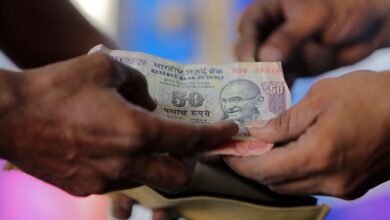Japan reveals new currency notes with world’s 1st moving holograms

Japan has launched its latest currency overhaul with the introduction of new 10,000 yen ($62), 5,000 yen, and 1,000 yen banknotes, incorporating cutting-edge holographic technology.
This redesign, the first in 20 years, aligns with Japan’s changing financial system as it moves more towards using digital payments instead of cash.
On Wednesday, Japan initiated the circulation of newly minted banknotes adorned with three-dimensional holograms depicting historical figures.
Transported under tight security from the Bank of Japan’s headquarters, these bills swiftly made their way to financial institutions, where some eager consumers could acquire them from banks and automated teller machines (ATMs).
Bank of Japan’s perspective and diverse representation on banknotes
Kazuo Ueda, Chief of the Bank of Japan, emphasized the enduring role of banknotes as a “critical settlement method” amidst the rising tide of digital payments.
The Bank plans to distribute 1.6 trillion yen worth of the redesigned bills on the launch day, as reported by Kyodo News.
In Fukaya, a city in Saitama Prefecture near Tokyo, celebrations began with a countdown event. They marked the debut of the new 10,000 yen bill, which honors Eiichi Shibusawa (1840-1931), known as “the father of Japanese capitalism.”
The newly redesigned banknotes pay tribute to influential figures who have shaped Japan’s cultural and scientific landscape. Educator Umeko Tsuda (1864-1929), a pioneering advocate for women’s rights, graces the 5,000 yen bill, while microbiologist Shibasaburo Kitasato (1853-1931), renowned as “the father of modern Japanese medicine,” is honored on the 1,000 yen note.
Innovative security features
The new banknotes have advanced security features to stop fake copies. They use modern holographic technology, like 3D stripes on the ¥10,000 and ¥5,000 bills that move the pictures when you tilt them. The ¥1,000 bill also has a holographic patch at the bottom left corner to make it harder to fake.
Other security improvements include bigger numbers in standard numerals to make it easier to see how much money it is.
It also includes special marks that help blind people feel and tell apart different bills, and traditional printing and watermarks for extra protection.
Japan’s leadership in anti-counterfeiting efforts
Japan shows it leads globally by being the first to use holography for portraits that move, making the banknotes more secure. These advancements are pivotal in Japan’s ongoing battle against counterfeiting, which, despite a decline in recent years (from 2,693 cases in 2020 to 681 cases in 2023), remains a persistent concern.
Starting July 3, 2024, the new banknotes will be gradually distributed to financial institutions, enabling access through ATMs and cashier services.
By the end of March 2025, approximately 7.5 billion new banknotes are expected to be in circulation, with preparations for 5 billion banknotes completed by March 2024.
Importantly, existing banknotes will continue to be accepted for transactions while the transition to new bills takes effect.





